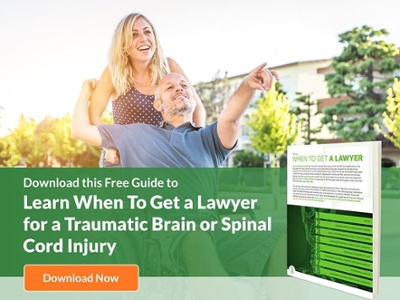Recovering from Spinal Cord Injury Medical Malpractice
Medical malpractice remains the third leading cause of death for people in the United States. Among the most recent available data, including a study by Johns Hopkins, suggests that more than 250,000 people die from medical errors each year. Some reports even claim that the numbers are significantly higher — even as high as 440,000 each year.
Spinal cord injuries (SCIs) are among the most catastrophic medical malpractice injuries. According to the National Spinal Cord Injury Statistical Center (NSCISC), 4.6% of all SCIs result from medical malpractice. However, the tricky part of this statistic is that many fatal injuries are not adequately reported by government agencies.
According to a report by CNN:
“Currently the cause of death listed on the certificate has to line up with an insurance billing code. Those codes do not adequately capture human error or system factors… Billing codes are designed to maximize billing rather than capture medical errors.”
Some medical malpractice-related statistics are particularly disturbing. With regard to medical treatment by Veterans Health Administration hospitals, USA Today reported:
“The Department of Veterans Affairs failed to report 90% of potentially dangerous medical providers in recent years to a national database designed to prevent them from crossing state lines and endangering patients elsewhere, according to the Government Accountability Office.”
If not all injuries or deaths that result from medical malpractice aren’t being reported, and if negligent healthcare providers aren’t always being held responsible, this means that finding yourself in the wrong hands when seeking medical treatment is entirely possible. So, when you or someone you love find yourself facing a spinal cord injury that resulted from medical malpractice, what do you do? Our team of spinal cord injury experts has put together some information for you about spinal cord injury recovery.
Actively Engage in Treatments to Focus on Your Recovery
We’re happy to say that spinal cord injury treatments have come a long way over the last 30 years. Whereas SCIs used to be viewed almost as hopeless causes, the evolution of spinal cord injury care for you or your loved one has now progressed to the point that there are hospitals and rehabilitation centers around the United States that specialize in and are equipped to treat these catastrophic injuries.
Additionally, activity-based therapy (ABT) has shown promising results for people with spinal cord injuries. Much like the name implies, this form of therapeutic activity is very physically active and is used to help improve strength and regain motor function after a traumatic injury. The exercises involve the use of repeated movements, which aim to help you or your loved one establish functional movement patterns while physically being out of their wheelchair.
New Technologies and Treatments are Becoming Available
Even though it is hard, it’s important to try to remain positive through all of this and to not lose hope. New spinal cord injury research and scientific breakthroughs are emerging all the time that can help to vastly improve your quality of life. In addition to experimental treatments like stem cell therapy and the use of electrical stimulation, there’s also promising research in the area of virtual reality and creation of newer and more functional robotic exoskeletons to help people with some forms of paralysis walk again.
Protect Yourself from Future Medical Errors and Negligence
It’s important that you focus on your recovery and take care of yourself or your loved one. However, it’s also key to ensure that you don’t find yourself again in a similar situation with another healthcare provider.
If you or someone you love received a spinal cord injury as a result of healthcare provider’s negligence, it’s important to remember that what happened to you is not your fault. Medical errors are never the fault of the victim. However, there are some things you can do to reduce your odds of becoming a victim (again) with future healthcare providers.
These recommendations include:
- Seeking a second opinion about any life-threatening diagnosis. Or, if you have symptoms that your doctor isn’t confident diagnosing, this also warrants getting a second opinion from another healthcare provider.
- Reading online patient reviews.
- Carefully reading informed consent forms.
- Reporting all of your symptoms to your doctor.
- Logging how your symptoms change over time, particularly in response to medications and lifestyle changes.
- Being thorough about asking your doctor questions. Research consistently shows that informed patients who aren’t afraid to question their doctors get better results. After all, this is about your health and body: Be actively engaged.
- Telling all of your providers about all of your medications.
- Double-checking the dosage of all medications.
- Assessing the risks and benefits of each and every medical procedure you undergo.
- Working with doctors who specialize in your condition. Spinal cord injury survivors consistently get better results when they seek care at hospitals and rehabilitation centers that specialize in SCIs.
Know Your Rights and Take the Next Step

If you suspect that you or your loved one has been the victim of medical malpractice, contact a spinal cord injury lawyer. After all, time is a key factor, both in terms of your potential rehabilitation from a spinal cord injury as well as your ability to file a lawsuit due to each state’s statutes of limitations.
Contact one of our experienced and knowledgeable spinal cord injury attorneys today to see whether you may be able to seek justice and financial compensation for the injuries caused by your doctor’s negligence. This compensation may provide some financial relief by helping you to cover your growing medical bills and other injury-related costs.
Speak with an SCI attorney by clicking on the banner image below.
Stay Updated on Advancements On Traumatic Brain &
Spinal Cord Injuries
About the Author




